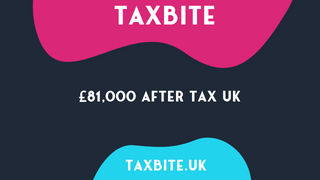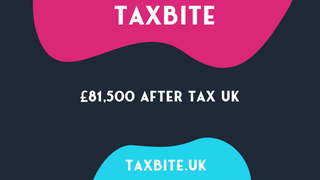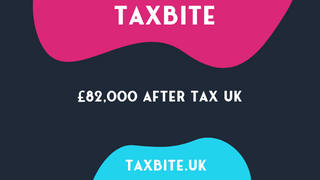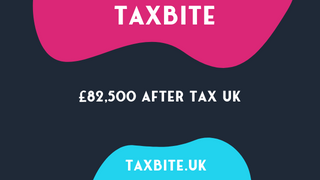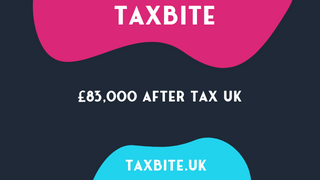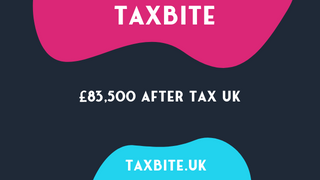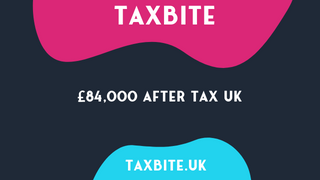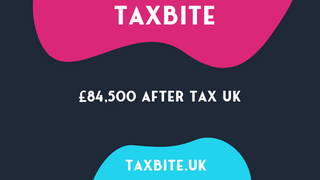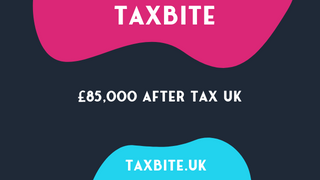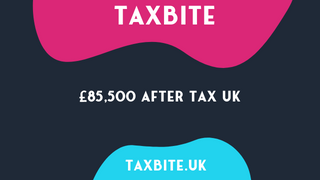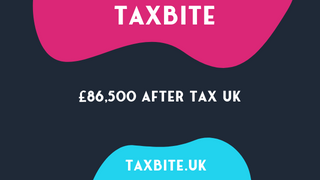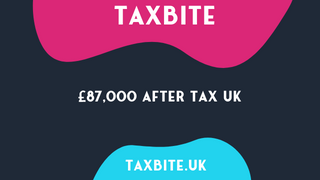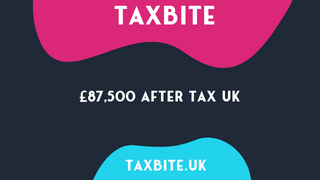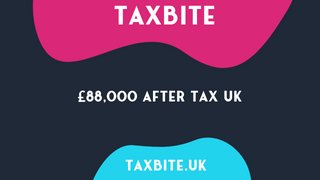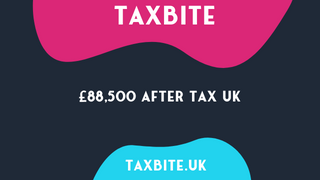Understanding your take-home pay is essential for financial planning and budgeting. In this section, we will explore the significance of knowing your actual after-tax income and how it can impact your financial decisions. We’ll help you get a clear picture of how much you can actually spend after tax and deductions, and why prioritizing and managing your take-home pay is crucial for meeting your financial goals.
Knowing your take-home pay is vital for managing finances and planning for your dreams. It gives you control over funds, helps you negotiate higher salaries, reduce debt, and make smart financial decisions. By understanding how much you take home after deductions, you can budget and prioritize savings and investments.
It’s important to learn the breakdown of your tax and National Insurance contributions. This helps determine how much you earn before tax is taken off. Personal allowances, the basic tax rate, higher tax rate, and additional tax rates all affect the percentage taken from your salary each month. Knowing this helps calculate raises or bonuses.
Additionally, knowing what National Insurance contributions involve, helps get a clearer picture of how government schemes provide social security benefits. This knowledge helps navigate the benefits system and save money.
Finally, understanding net pay versus gross pay gives an accurate reflection of actual earnings. This knowledge can help bigger life choices like mortgage repayments or continuing education. Knowing your personal income allows you to make wise investments and avoid wasteful expenses.
In short, being aware of your take-home pay has many advantages. It enables money management, making it easier to pursue personal aspirations and stay free from financial woes such as overspending, unexpected expenses, or unwise investments, which could lead to catastrophic debt or bankruptcy. Hopefully, this piece will help readers realize their incomes as they plan future goals like when to buy a house.
Are you curious about what your tax breakdown will look like in the future? This section provides an overview of your tax breakdown, including total tax paid, deductions, personal allowance, and tax-free income. You will also learn about the basic and higher tax rates and how they may affect your finances. By reviewing the data presented here, you can gain a clearer understanding of what to anticipate from your tax bill in the upcoming years.
Comprehending the total tax and monthly deductions for your take-home pay is essential. This includes income tax and national insurance, depending on personal allowance, thresholds, and tax rates. To fathom your deductions, check the table below.
| Earnings Range | Basic Rate Percentage | Higher Rate Percentage |
|---|---|---|
| Up to £37,500 | 20% | N/A |
| £37,501 – £150,000 | 20% | 40% |
| Above £150,000 | 45% | N/A |
Remember, modifications to your salary like student loan or pension contributions can affect your deductions. Consequently, you should factor these into your take-home pay estimation. A guide like “Understanding Your £50,000 After Tax Income” can help with budgeting.
Personal Allowance in the UK guarantees a certain amount of tax-free income each year. For 2021/22, the limit is £12,570. If income exceeds this, it is taxable.
For those earning over £100,000, the Allowance decreases by £1 for every £2 earned above the limit, until it reaches zero.
Certain income can also be tax-free – interest on savings accounts or ISAs, Premium Bond wins, and Child Benefit, to name a few.
It is crucial to understand these allowances to manage finances better. It could potentially increase net income by avoiding unnecessary tax payments. C recently published an article on understanding after-tax income in 2023. It emphasises the importance of comprehending Personal Allowance and Tax-Free Income.
Death and taxes are certain. Knowing about Personal Allowance and Tax-Free Income is key to minimising tax payments and getting the most out of your take-home pay.
Understanding the Basic Tax Rate and Calculation is a must. It’s applied to taxable income between £12,501 and £50,000. Refer to the table for calculation specifics. For example, someone with a taxable earnings of £30,000 falls within the income threshold and is taxed at 20%. The first £12,500 is tax-free. This only applies to taxable income. There are other tax rates for incomes above certain thresholds. Knowing them all gives you better control over finances and keeps you up to date with the government. Ultimately, knowing your Basic Tax Rate and Calculation is essential. Don’t pay more tax than necessary – get higher on life instead!
Knowing the Higher Tax Rate is essential for people making more than the Basic Tax Rate. It is 40% for income over £50,270 a year. Let’s look at an example. Take an individual making £70,000 yearly. After taking out their Personal Allowance of £12,570 and paying the Basic Tax of 20%, they would have paid £8,812 so far. The remaining income falls under the higher tax bracket, totalling £8,728 (£19,260 x 0.4). That brings the total of tax paid to £17,540. See the tables below for National Insurance:
| Personal NI Threshold | Monthly Earnings | NI Payable |
|---|---|---|
| £9,568 | Up to £866 | Nil |
| Over £866 | 2% |
| Personal NI Allowance | NI Contribution |
|---|---|
| £183 per week | 12% for earnings between Primary Threshold & Upper Secondary |
Say someone earns £68,000 after deducting the Personal Allowance. The National Insurance contributions for that month will be: no NI for earnings below £865 per month. And then 12% up to £4,247 per month. Anything above that has no extra NI.
Remember, if you make over a gross income of £100,000, you could lose your Personal Allowance and be subject to a high Income Benefit Charge. Knowing how much tax and NI is crucial for budgeting. Doing so allows for financial stability and smart future planning.
The UK’s extra tax rate is essential for people earning big. It applies to those earning over £150,000 each year. Taxpayers in this bracket must pay an additional 45% on any money earned over their allowance, according to official data.
For example, if someone earns over £150,000 and gets a bonus of £20,000, the additional tax rate of 45% will be applied. This would lead to a deduction of £9,000, leaving the person with £11,000 after the tax is taken off.
This type of taxation has been used since 2010 and won’t be changing soon. So, those with high incomes must always be aware of how the extra tax rate affects their wages and plan accordingly.
Curious about where your money goes once you start earning? Let’s break down your National Insurance contributions and unveil the significant role it plays in reducing your take-home pay. Discover how much you’re contributing and learn about the Personal Allowance, which is the amount you can earn tax-free, the 12% rate for earnings between £9,568 and £50,270, and the 2% rate for earnings above £50,270. Understanding these rates and thresholds can help you accurately budget and plan your finances.
Knowing your total national insurance paid and monthly deductions is vital to managing your take-home pay. National insurance, along with income tax, is taken from your salary, depending on what you make.
It’s essential to remember that national insurance contributions are divided into 3 categories: Class 1, 2 and 3. Each class covers different benefits.
To help you understand the figures, here is a table:
| Total National Insurance Paid | Monthly Deductions |
| £5,687.68 | £473.96 |
Class 1 is the most popular type and covers statutory sick pay, maternity pay, paternity pay and the state pension. Self-employed individuals make class 2 contributions to get certain benefits. Class 3 contributions are voluntary and are made if you don’t qualify for mandatory contributions.
It’s worth noting that everyone has a personal national insurance allowance before they have to make contributions. For 2021/22 in the UK, this allowance is £9,568 per annum or £797 per month. Knowing the details of national insurance contributions and deductions means you can manage your money better and maximize your take-home pay.
Knowing your own national insurance threshold and tax-free income is key when figuring out your take-home pay. The personal national insurance threshold is the sum you need to make before paying national insurance contributions, while tax-free income is the amount of money you can earn without paying taxes.
On top of your personal allowance, which is the same as your tax-free income, there are diverse rates of national insurance contributions depending on what you earn. The first rate is 12%, which applies to earnings between £184 and £967 each week. When you make more than this amount, an extra 2% will be charged on any money earned above £967.
Remember that personal national insurance threshold and tax-free income change every year based on inflation and government budget decisions. Keeping tabs on these changes means you can ensure your take-home pay is exact and cost-effective.
It’s essential to note that although people often focus on their gross salary, it’s their net income or take-home pay that is most important for managing money. Knowing your national insurance threshold and tax-free income helps you to know the amount of money you’ll have after deductions for taxes and social security.
Time to part with more cash as we look at the 12% national insurance rate and its calculations.
Understanding National Insurance Contributions (NIC) is key to estimating tax bills. If you earn more than £6,240 per year, you have to pay 12% of your extra earnings in NICs. A table can help you work out the amount of NICs you need to pay.
The calculation basis is earnings above £50,270 per annum, and the employee’s full year rate threshold (lower earnings limit) is £6,240 per year. The employer’s full year rate threshold (upper earning limit) is £50,270 per year.
Remember, ‘earnings’ can mean more than just salary – it includes other perks from your employer too.
Tax returns and NICs can be tricky. Professional advice might be useful. It’s important to track income tax and NICs correctly, or you could face penalties. For example, two people earning £51,300 could end up with different deductions depending on their employment status. One works for two companies, the other runs their own business. If they don’t keep track of their NICs, they could end up with less money.
Comprehending the two percent rate and computation is key to precisely estimating our take-home pay. This rate determines the percent of National Insurance we have to pay when our income surpasses a certain point.
To understand how this rate applies to our income, the chart below splits up the monthly deductions for National Insurance relying on income:
| Income Range | Monthly Deductions |
|---|---|
| £8,840 – £50,270 | 12% of earnings above £797 per month |
| Above £50,270 | 2% of earnings above £50,270 per year |
This implies if our income is between £8,840 and £50,270, we will be charged 12% of our earnings above the personal National Insurance boundary of £797 every month. But, when exceeding an annual income of £50,270, only 2% of our earnings surpassing this amount will be charged.
It’s vital to note these percentages can vary over time as government policies get modified each year. Therefore, it’s always advisable to stay informed and verify the most recent updates. Also, there are diverse options available for people who seek personalized direction in financial planning to maximize their take-home pay.
Why fret about social security when you can geek out about your net pay and pension contributions?
In this article, we will examine important details to consider for your earning potential in 2023. Discover your net pay and monthly income, and learn about the gross hourly rate for full-time work. We will also discuss adjustments for student loan or pension contributions so that you can make informed decisions for your future financial planning. Our information is supported by factual data from reliable sources.
Understanding your net pay and income each month is important for managing your finances. Your net pay is the amount you get after deductions, such as tax and national insurance, and other adjustments like student loan or pension contributions. For example, with a yearly income of £86,500 before tax in 2023, your monthly net pay should be around £5,679.
Creating a table can help break down the numbers:
| Description | Amount |
|---|---|
| Gross Income | £86,500 |
| Tax Paid | £24,303 |
| National Insurance Paid | £5,194 |
| Pension Contribution | £0 |
| Student Loan Contribution | £0 |
| Total Deductions | £29,497 |
| Net Pay | £57,003 |
| Monthly Net Pay | £4,750 |
Remember, some unique situations may affect your overall deductions.
It’s important to stay informed of changes in the UK tax system so you can precisely understand your income and net pay each year. This knowledge can help you create a budget plan that saves money and minimises spending on daily expenses.
You may want to seek professional advice to make sure you’re making the right decisions. Knowing your net income and how much you can save per month can help you plan investments and pay off debts, leading to financial security.
Knowing your gross hourly rate for full-time work is essential for managing finances and budgeting. It’s how much you earn before taxes and deductions. To calculate it, divide your yearly salary (£86,500) by the number of working hours in a year (35 hours per week multiplied by 52 weeks). That’s £48.15 an hour.
Here’s a table:
| Gross Annual Salary | Working Hours Per Year | Gross Hourly Rate |
|---|---|---|
| £86,500 | 1,820 | £48.15 |
This doesn’t include deductions like income tax or national insurance. Also, student loan repayments and pensions can reduce your take-home pay. Knowing your gross and net pay is important when making spending and saving decisions.
Sarah, a graduate, didn’t understand her monthly pay and deductions. She overspent and had trouble making ends meet. After learning about taxes and national insurance, she was able to manage her finances better and plan achievable goals.
Student loans and pensions may take a chunk of pay, but at least you’ll be informed and set for retirement… if it still exists.
Student loan and pension contributions are important to consider when managing finances. Employers may deduct student loan repayments from salary, based on the plan you’re on. Personal pension contributions or company pension schemes (3-5% of salary) may be chosen. Tax relief may be eligible for personal pension contributions.
Agreeing to a salary sacrifice arrangement reduces taxable income. Some employers may offer additional pension contributions for retirement savings. Budget for expenses and saving goals, taking these adjustments into account. Student Loan and Pension Contribution deductions may overlap, reducing take-home pay.
Online calculators and financial advisors provide guidance. Staying informed and making educated decisions about finances is key.
Understanding your take-home pay can have numerous benefits, both financial and personal. As we come to the conclusion of this article on earning £86,500 before tax in 2023, let’s take a closer look at the advantages of comprehending your take-home pay. From achieving your financial goals to gaining peace of mind, we’ll explore how knowing your take-home pay can positively impact your life. So, let’s dive in and discover the power of understanding your earnings!
Realizing your take-home pay can be hugely advantageous for financial organizing and management. Knowing the amount you’ll get after taxes and other deductions helps you to arrange your funds and make sound decisions. This article examines the UK taxes and national insurance contributions to help you comprehend your £86,500 income after tax in 2023.
To completely comprehend your take-home pay, it is essential to know the breakdown of tax payments. This includes the total tax paid, personal allowance and tax-free income, basic tax rates, and computations for higher and additional tax rates. Becoming familiar with the national insurance contribution breakdown can also give valuable understanding into monthly deductions and personal national insurance thresholds, 12% rate calculations, and 2% rate calculations.
Bear in mind that even slight tweaks like student loan or pension contributions can affect your net pay and monthly income. Our reference data likewise gives knowledge on the gross hourly rate for full-time work. By taking all these variables into account, you can decide how much money you will have for costs each month. The advantages of understanding your take-home pay are huge and can lead to better financial steadiness and security.
The marginal tax rate for an £86,500 annual income in the UK is 43.3%. This means that any immediate additional income will be taxed at this rate. To calculate this rate, you need to identify the tax bracket that your income falls into and find the percentage at which it is taxed.
The net income per month for an £86,500 salary in the UK is £4,858, according to income tax calculations that take into account all applicable tax and national insurance contributions, which are deducted from your gross pay each month.
An increase of £100 in gross pay for someone earning an £86,500 salary in the UK would result in a £56.75 increase in net pay. This is because the additional income will be taxed at a marginal tax rate of 43.3%, leaving only £56.75 left as extra net income.
Whether an £86,500 yearly income is considered a good salary in the UK depends on various factors such as the industry, location, and the individual’s lifestyle. However, it is above the national median salary and comfortably above the UK average earnings, which is around £29,000.
The year 2023 tax for someone earning $86,500 in the United States varies depending on the state or territory in which they reside. However, using single filer rates, the total tax ranges from $17,907.75 to $24,963.56, including federal and state taxes, FICA and Medicare contributions, with federal tax being $11,290.50 and state tax ranging from $0.00 to $7,055.81.
For an £86,500 yearly income in the UK, the monthly National Insurance contribution is £514, according to the income tax calculations, which take into account all tax and NI deductions. In the 2022-2023 tax year, the total National Insurance liability is £6,172, with no National Insurance paid on the first £12,569 earned, and 12% on £37,695 and 2% on £36,236.
Here’s a list of similar salaries:


